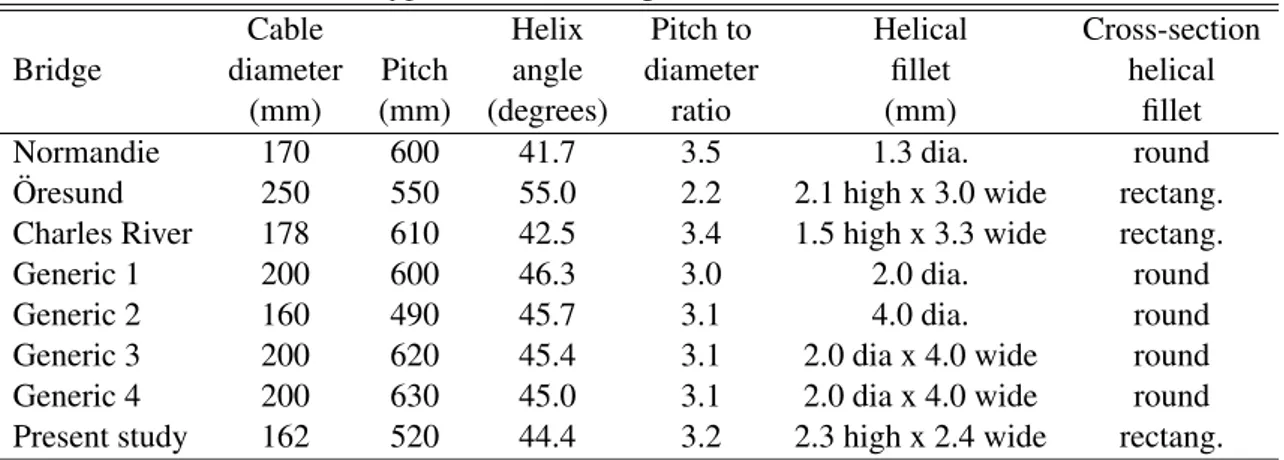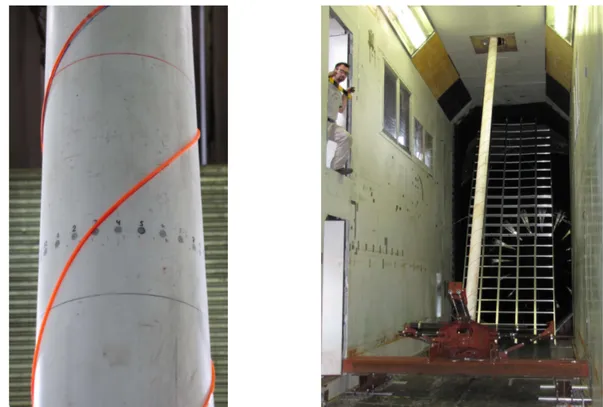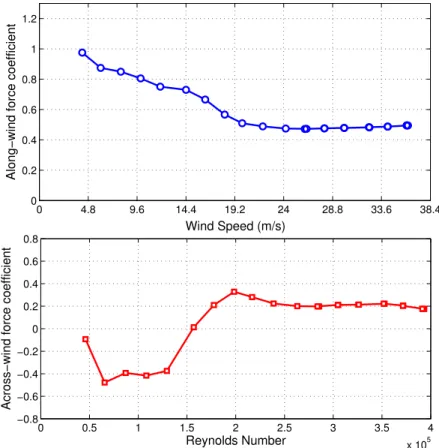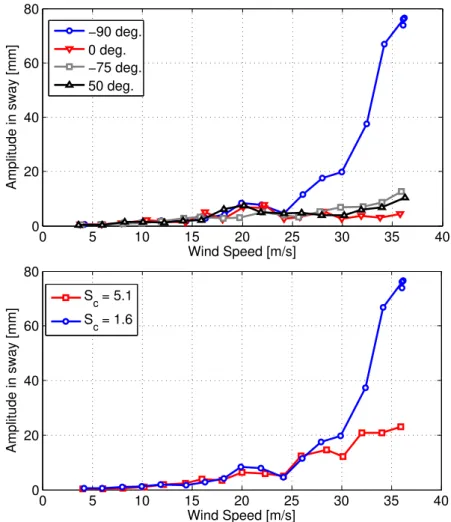Publisher’s version / Version de l'éditeur:
European and African Conferences on Wind Engineering, 2013-07-11
READ THESE TERMS AND CONDITIONS CAREFULLY BEFORE USING THIS WEBSITE.
https://nrc-publications.canada.ca/eng/copyright
Vous avez des questions? Nous pouvons vous aider. Pour communiquer directement avec un auteur, consultez la première page de la revue dans laquelle son article a été publié afin de trouver ses coordonnées. Si vous n’arrivez pas à les repérer, communiquez avec nous à PublicationsArchive-ArchivesPublications@nrc-cnrc.gc.ca.
Questions? Contact the NRC Publications Archive team at
PublicationsArchive-ArchivesPublications@nrc-cnrc.gc.ca. If you wish to email the authors directly, please see the first page of the publication for their contact information.
NRC Publications Archive
Archives des publications du CNRC
This publication could be one of several versions: author’s original, accepted manuscript or the publisher’s version. / La version de cette publication peut être l’une des suivantes : la version prépublication de l’auteur, la version acceptée du manuscrit ou la version de l’éditeur.
Access and use of this website and the material on it are subject to the Terms and Conditions set forth at
Wind-tunnel investigations of an inclined stay cable with a helical fillet
Larose, Guy L.; D'auteuil, Annick; Bosch, Harold R.; Jakobson, Jasna B.;
Macdonald, John H. G.
https://publications-cnrc.canada.ca/fra/droits
L’accès à ce site Web et l’utilisation de son contenu sont assujettis aux conditions présentées dans le site
LISEZ CES CONDITIONS ATTENTIVEMENT AVANT D’UTILISER CE SITE WEB.
NRC Publications Record / Notice d'Archives des publications de CNRC: https://nrc-publications.canada.ca/eng/view/object/?id=eebeca48-1dc8-4fc1-b475-aecc294e2af9 https://publications-cnrc.canada.ca/fra/voir/objet/?id=eebeca48-1dc8-4fc1-b475-aecc294e2af9
helical fillet
Guy L. Larose1, Annick D’Auteuil1, Harold R. Bosch2, Jasna B. Jakobsen3, and
John H.G. Macdonald4
1National Research Council Canada, 1200 Montreal Road, Ottawa, Ontario, Canada;
guy.larose@nrc.gc.ca
2Aerodynamics Laboratory, Federal Highway Administration, McLean, Virginia, USA 3Department of Mechanical and Structural Engineering and Material Science, University of
Stavanger, Norway
4Department of Civil Engineering, University of Bristol, UK
Abstract
An experimental study of the effect of adding a helical fillet to the surface of a stay cable in relation to its response to wind-induced excitation was carried out on a 1:1 scale free-to-respond sectional model at the National Research Council Canada. The experiments revealed that a stay cable with a helical fillet inclined at 60◦to the flow can experience wind induced vibrations with
large amplitudes in smooth or turbulent flow for a low level of structural damping. The oscillations observed appeared to be self-limited in amplitude and could be mitigated with an increase of structural damping. The experiments revealed also that the aerodynamic forces at the source of the vibrations were highly sensitive to a rotation of the cable model about its axis. Measurements of the external diameter of the smooth cable model have shown a maximum eccentricity equivalent to 1% of the mean diameter which appeared to be sufficient to influence the aerodynamics of the cable model, even with the helical fillet in place.
1 Introduction
Following concerns expressed in the structural engineering community with regards to the aerody-namics of inclined stay cables with helical fillets, the National Research Council Canada (NRC), in cooperation with the University of Bristol and the University of Stavanger, was mandated to conduct an experimental study in its 3 m x 6 m Propulsion and Icing Wind Tunnel. This work was initiated by the Federal Highway Administration of the United States (FHWA) who undertook the task to fill the gap in the knowledge of the aerodynamics of stay cables with helical fillets. For the past 15 years, helical fillets affixed to the surface of stay cables have been used with success to mitigate rain/wind induced vibrations, see Larose & Smitt (1999). However, it is not known if the helical fillets could also mitigate dry inclined cable galloping or high reduced-velocity vortex shedding induced oscillations of the stay cables.
The main objective of the investigation was therefore to define the sensitivity of stay cables with helical fillets (such as those commonly used on cable-stayed bridges in Europe and North America) to galloping. For this purpose a small helical fillet was affixed to an existing stay cable model composed of a steel core covered with a high density polyethylene (HDPE) tube, typical of actual bridge stay cables. The aeroelastic stability of the cable as well as the nature of underlying aerodynamic forces were investigated.
6thEuropean and African Wind Engineering Conference 2
The investigation was divided in two phases. In the first phase, the aerodynamic stability of a cable with helical fillets was studied with a spring-supported cable model, in smooth flow, for a cable inclined at 60◦ from the horizontal. The dynamic response of the model and the cross-sectional wind
induced surface pressures were monitored as a function of Reynolds number. In the second round of tests, different cable orientations were studied, (45◦ and 60◦). For the cases where important cable
vibrations were observed in smooth flow, tests in turbulent flow for conditions representative of field conditions were carried out as well as tests at higher level of structural damping. This paper presents the main findings of this study.
2 The experiments
The experiments were carried out on a 6.7 m long sectional model with a diameter of 0.162 m com-posed of a central steel core covered with a HDPE tube obtained from a bridge construction site. A double parallel helical fillet with a rectangular cross-section of 2.3 mm high x 2.4 mm wide and a right-handed helix angle of 44.5◦ and a pitch of 520 mm was glued to the surface of the model (see
Figure 1). The geometry of the helical fillet was selected to represent what is used currently on stay cables of long span cable-stayed bridges to mitigate rain-wind induced oscillations. No official de-sign guidelines nor specifications exist on what the geometry of the helical fillet should be for it to be effective at mitigating rain/wind induced vibrations. The industry has adopted what experience has shown to be a viable solution based on its first use for Pont de Normandie and currently stay cable manufacturers are each proposing their own solutions. Table 1 presents a short list of helical fillet geometries that have been installed on bridge stay cables in Europe and North-America.
Table 1: Typical helical fillet geometries (all double helix)
Cable Helix Pitch to Helical Cross-section Bridge diameter Pitch angle diameter fillet helical
(mm) (mm) (degrees) ratio (mm) fillet
Normandie 170 600 41.7 3.5 1.3 dia. round
¨
Oresund 250 550 55.0 2.2 2.1 high x 3.0 wide rectang. Charles River 178 610 42.5 3.4 1.5 high x 3.3 wide rectang.
Generic 1 200 600 46.3 3.0 2.0 dia. round
Generic 2 160 490 45.7 3.1 4.0 dia. round
Generic 3 200 620 45.4 3.1 2.0 dia x 4.0 wide round Generic 4 200 630 45.0 3.1 2.0 dia x 4.0 wide round Present study 162 520 44.4 3.2 2.3 high x 2.4 wide rectang.
The sectional model was mounted in an 8-spring suspension rig allowing along-wind and across-wind vibrations of the model at a frequency of 1.4 Hz in both directions. The total sprung mass was 406 kg and the inherent structural damping of the suspension rig was low, between 0.07 and 0.15% of critical for vibration amplitudes observed during the tests. Simultaneous measurements of fluctuating surface pressures on the circumference of the model (4 rings of 32 taps) and response at its extremities were carried out for wind speeds ranging from 4 to 36 m/s covering the entire critical number regime and beyond, 43,000< Re <391,000.
The investigation included experiments with the cable model at 60◦and 45◦inclination in smooth
flow with the helical fillet, at 60◦inclination in turbulent flow with and without the helical fillet and at
60◦inclination in smooth flow without helical fillet. Figure 1 shows views of the sectional model and
Figure 1: View of the helical fillet glued to the surface of the model (left) and view from downstream of the sectional model at 60◦inclination with the turbulence grid in the background (right).
Visual inspection of the model revealed that the HDPE tube (without helical fillet) was not per-fectly round. The outside diameter of the model was measured at every 10◦ of azimuth at four
span-wise locations, corresponding to the location of the four cross-sectional rings of surface pressure taps. The results are presented in Figure 2. The largest observed deviation was equivalent to 1% of the mean diameter with four distinct regions alternating from peak to valley. Flammand & Boujard (2009) have reported a similar profile for a HDPE tube and suggest that the method of production of the tube using extrusion results in a shape that differs systematically from a circle.
−80 −60 −40 −20 0 20 40 60 80 160 160.5 161 161.5 162 162.5 163 Azimuth (± 0.25 degree) Diameter ( ± 0.2 mm) Ring 1 Ring 2 Ring 3 Ring 4 29 30 31 32 1 2 3 4 5 6 7 8 9 10 11 12 13 14 15 16 17 18 19 20 21 22 23 24 25 26 27 28 Pressure taps
6thEuropean and African Wind Engineering Conference 4
3 Results
The two main findings of the first phase of this investigation were: i) a stay cable with a typical helical fillet and inclined at 60◦ to the flow can sustain wind-induced vibrations in smooth flow; and, ii) the
amplitude of the cable vibrations observed were greatly influenced by the geometry of the HDPE tube, even with the helical fillet in place, whereby a rotation of the cable model on its longitudinal axis could translate in vibrations with unacceptable amplitudes or vibrations with small amplitude.
Observation i) is new, i.e. it has not been reported elsewhere. It was not expected since the general belief was that the helical fillet would reduce the sensitivity of the aerodynamics of the model to Reynolds number effects in the critical regime, which is believed to be one of the primary cause of inclined cable galloping. It might explain observations of stay cable vibrations of cables with a helical fillet in dry conditions as reported in field measurement campaigns. The oscillations were not caused by buffeting due to turbulence and were similar to the limited amplitude responses described in Cheng et al. (2003). It was observed that the cable model with the helical fillet experienced a drag crisis almost as pronounced as for a smooth cable, however the oscillations occurred at a wind speed above 25 m/s corresponding to a Reynolds number regime (super-critical) where the cross-sectional force coefficients did not vary significantly with wind speed as shown in Figure 3.
0 4.8 9.6 14.4 19.2 24 28.8 33.6 38.4 0 0.2 0.4 0.6 0.8 1 1.2 Wind Speed (m/s)
Along−wind force coefficient
0 0.5 1 1.5 2 2.5 3 3.5 4 x 105 −0.8 −0.6 −0.4 −0.2 0 0.2 0.4 0.6 0.8 Reynolds Number
Across−wind force coefficient
Figure 3: Mean cross-sectional force coefficients calculated from integration of surface pressures for the cable model inclined at 60◦, model rotated -90◦ about its main axis, in smooth flow, with helical
fillets.
Observation ii) is also unique and has important consequences. However it was anticipated, first based on the observations of Flammand & Boujard (2009) who pointed out the systematic deviation of HDPE tubes from a circular shape and its possible corresponding influences on the mean aerodynamic force coefficients; and, secondly in light of the asymmetry of the cable cross-sectional shape shown in
Figure 2. The location of the deviations around the circumference appeared to be consistent along the length of the model suggesting that they were formed during the extruding process of the HDPE tube or during its long term storage. If an asymmetric pressure distribution can be observed on a smooth round model in the critical regime due to the formation of a small laminar separation bubble on one side of the model and not on the other, as reported in Larose et al. (2003), it is understandable that a mildly asymmetric cable shape (1% of its mean diameter) will have complex aerodynamic properties in the same critical Reynolds number regime. Note that the level of eccentricity of the cable model is known to be typical of what can be found on existing stay cables covered with a HPDE tube.
Based on observation ii), it was concluded that each time the cable was rotated on its axis, a new shape was exposed to the flow and a different behaviour could be expected. This was confirmed through the measurements of the response of the cable for various angles of rotation. For the cable with the helical fillet and inclined at 60◦, in smooth flow, 13 rotations of the cable were carried out,
from -92◦ to 65◦. Significant vibration of the model in the sway mode was observed for the cable
rotated at angular positions of -92◦, -90◦ and -88◦. The angular position was defined as being 0◦
when the pressure tap 4 was the stagnation point (see Fig. 2) and a negative angle was associated with a clockwise rotation of the cable from a top view perspective (negative azimuths in Fig. 2). Large amplitude displacements in the first sway mode (across-wind) on the order of 30 mm to 75 mm were
0 5 10 15 20 25 30 35 40 0 20 40 60 80 Wind Speed [m/s] Amplitude in sway [mm] −90 deg. 0 deg. −75 deg. 50 deg. 0 5 10 15 20 25 30 35 40 0 20 40 60 80 Wind Speed [m/s] Amplitude in sway [mm] Sc = 5.1 S c = 1.6
Figure 4: Amplitude of motion in sway for the cable inclined at 60◦, with a helical fillet, in smooth
flow. Top: for four rotations of the cable on its longitudinal axis. Bottom: for two Scruton numbers (Sc) at a cable rotation of -90◦.
6thEuropean and African Wind Engineering Conference 6
observed in the vicinity of -90◦but did not occur for the other rotations examined. Figure 4 shows the
amplitude of motion in sway obtained for angles of rotation of the cable with a helical fillet.
For the rotation angle where the largest vibrations were observed, damping was added to the suspension rig until the vibrations subsided. At a damping level equivalent to a Scruton number (Sc = mζ /ρD
2
whereζ is damping as a fraction of critical) of 5.1, only random oscillations associated with buffeting were observed as shown in Figure 4 (bottom).
Tests on the cable model without the helical fillet in smooth and turbulent flow at an inclination of 60◦also revealed the same sensitivity to a rotation of the cable on its axis. Large vibrations were
observed at several rotational angles and at different wind speeds depending on the cable rotation. Experiments carried out to depict the influence of the wind turbulence, the cable-wind angle, and the helical fillet on the static and dynamic response of the cable model reported in Larose & D’Auteuil (2011) will be presented at the Conference.
References
Cheng, S., Larose, G.L., Savage, M.G., & Tanaka, H. 2003. Aerodynamic behaviour of an inclined circular cylinder. Journal of Wind and Structures, 6(3), 197–208.
Flammand, O., & Boujard, O. 2009. A comparison between dry cable galloping and rain-wind induced vibrations. Proc. of 5th European African Conference On Wind Eng., Florence, Italy, 485–488. Larose, G.L., & D’Auteuil, A. 2011. Wind tunnel investigations of an inclined stay cable with a helical
fillet. Technical Report LTR-AL-2011-0093, Aerodynamics Laboratory, National Research Council Canada.
Larose, G.L., & Smitt, L.W. 1999. Rain/wind induced vibrations of the parallel stay cables for the Oresund High Bridge. Proc. of the IABSE Conference, Cable-stayed Bridges, Malm¨o, Sweden. Larose, G.L., Savage, M.G., & Jakobsen, J.B. 2003. Wind tunnel experiments on an inclined and
yawed circular cylinder in the critical Reynolds number range. Proc. of 11th Int’l Conference On Wind Engineering, Lubbock, Texas, 1705–1712.



